Recent Updates
08/18/2025 12:00 PM
Government extends Plug-in Van and Truck Grant until 2027
08/18/2025 12:00 PM
Are electric vehicles dead in the US?
08/18/2025 12:00 PM
10 models in three years: decoding VW's new car blitz
08/18/2025 12:00 PM
Best electric company cars: driven, rated, ranked
08/18/2025 12:00 PM
First look at new VW T-Roc ahead of imminent reveal
08/17/2025 12:00 PM
How the next Corvette could be designed in the UK
08/17/2025 12:00 PM
Experts think only a few car makers will survive - but I’m not buying it
08/16/2025 12:00 PM
Super-GT showdown: Ferrari 12Cilindri vs Aston Martin Vanquish
08/16/2025 12:00 PM
Scotland's hidden gem: Knockhill is one of the world's best tracks
08/16/2025 12:00 AM
Lexus Sport Concept revealed in fresh hint at LFA successor
EV, Hybrid, Hydrogen, Solar & more 21st century mobility!
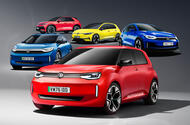 New ID 1, ID 2 and ID 2X to lead entry-level EV push – and firm commits to further ICE models
New ID 1, ID 2 and ID 2X to lead entry-level EV push – and firm commits to further ICE models
Volkswagen is preparing for one of the most comprehensive product offensives in its 87-year history, with 10 new electric and combustion-engined models due to be launched over the next three years as it reshapes its core line-up.
Against a backdrop of stalled sales, deep cost cuts and workforce layoffs at home, the aim of VW’s reinvention is to propel the German company back to its former strength, profitability and global competitiveness.
At the heart of this renewed push are the ID 1, ID 2 and ID 2X, the new front-wheel-drive, entry-level electric cars that have been conceived as electric successors to the Up, Polo and T-Cross.
Alongside this new trio, the German company will look to bring to market a wider range of electric cars – such as a Golf EV – while upgrading its current crop of combustionengined best-sellers as part of a renewed push for its ICE models.
A new electric entry point
![]()
Seen by VW as probably the most vital of all its upcoming models, especially in terms of mass EV adoption, is the ID 1.
Previewed by the ID Every1 concept earlier this year, the new entry-level model has been billed by VW CEO Thomas Schäfer as “the last piece of the puzzle†in the firm’s electric transformation. “This is the car the world has been waiting for,†he said at its unveiling in March.
The production ID 1 is scheduled to hit the road in 2027 and will be priced from £17,000, which will position it as a premium rival to the cheapest EVs currently on sale, such as the £16,000 Leapmotor T03 and £15,000 Dacia Spring.
The arrival of a 3880mm-long, five-door hatchback will also give VW a foot in an increasingly popular market segment that is expected to experience robust growth in future years with the imminent arrival of models from ‘legacy’ brands, such as the Renault Twingo.
Key to the ID 1’s low price is MEB Entry, a new cost-optimised platform developed specifically for compact electric models.
This will be used first by the ID 2, which is set to be fully revealed at the Munich motor show in September.
Unlike the MEB platform used by VW’s existing EVs, MEB Entry features a frontmounted electric motor in a layout designed exclusively to provide compact dimensions, claimed class-leading interior space and a luggage compartment with a lower fl oor and greater capacity than competitors.
The ID 1 will be powered by a newly developed front-mounted electric motor developing 94bhp. It has been conceived to deliver a top speed of 81mph and offer at least 155 miles of range from a lithium-ironphosphate (LFP) battery of around 38kWh in capacity.
It will also feature a relatively simple torsion-beam rear axle (based on that of the current Polo) and be VW’s first model to feature a fundamentally new software architecture, developed through a partnership between VW’s software division, Cariad, and American EV maker Rivian.Â
The software’s zonal structure, adapted from Rivian’s R1 off-roader, is claimed to allow for faster updates, improved functionality and more flexible hardware integration than the system in use by today’s VW models.
VW design boss Andreas Mindt said the design of the ID 1 was conceived to project warmth and accessibility, drawing inspiration from both the Up and the Golf.Â
“We wanted to give it a friendly face – something that makes you smile even before you get in,†he told Autocar. “That slightly cheeky expression at the front is intentional. It’s a car with character, not just a functional object.â€
Push for affordability
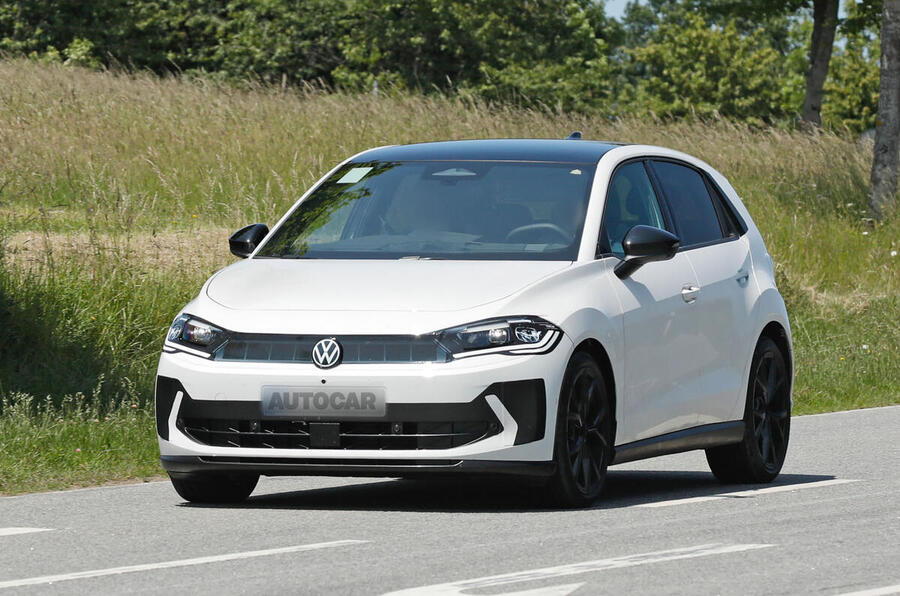
Before the ID 1 will come the slightly larger ID 2. The first car to be based on VW’s new MEB Entry platform and the car that kick-starts the German firm’s affordable EV push will be shown in production spec at the Munich show before going on sale early next year.
It will be the base for what VW boss Schäfer has described as the wider Volkswagen Group’s new Electric Urban Car Family, which will be made up of the larger ID 2X, Cupra Raval and Skoda Epiq.
The VW Group is planning a mass assault on the electric B-segment (which has gained life since the release of the Renault 5 earlier this year), with its cars set to start at less than £25,000 to undercut rivals such as the Peugeot e-208 and Vauxhall Corsa Electric.
Power outputs for the ID 2 are set to range from 158bhp to 187bhp, while a flagship GTI hot hatch is set to deliver in the region of 223bhp.
It will offer a top-end range of 280 miles from a 56kWh nickel-manganese-cobalt (NMC) battery pack.
Inside, the ID 2 will feature a functional but spacious interior with both physical controls and a 12.9in central infotainment touchscreen.
A year after the arrival of the hatchback, the raised ID 2X will go on sale. The model will be shown in concept guise for the first time at the Munich show. It will be near-identical to the ID 2 underneath but feature a higher ride height, more rugged design elements and increased ground clearance.Â
The definitive naming of VW’s three new entry-level electric models remains a closely guarded secret. However, insiders suggest they could forgo the ID 1, ID 2 and ID 2X names for a combination of the ID sub-brand label and VW’s traditional models, such as ID Up, ID Polo and ID Cross.
All change for larger ID EVs
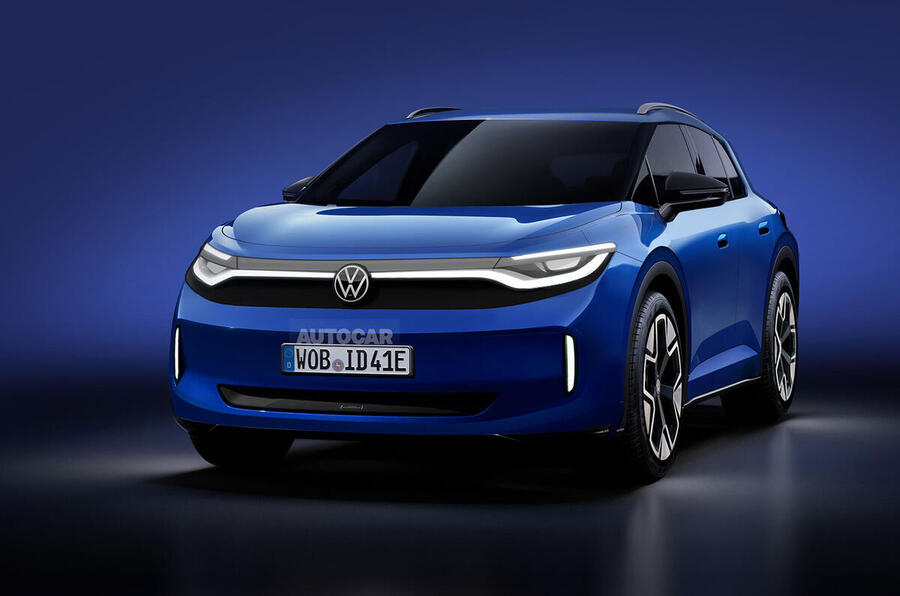
Away from new models, VW will update heavily its range of current cars. This will start next year with the brand’s two best-selling EVs: the ID 3 hatchback and ID 4 SUV.
Key to the upgrades will be a comprehensive makeover both inside and out, one that technical development boss Kai Grünitz said will be refl ective of the new range of smaller EVs to bring the whole lineup together while improving the user experience inside.
This is part of a move to keep the pair fresh until deep into this decade, when replacements are due.Â
The facelifted ID 3 is scheduled to be revealed during the second quarter of next year, while the ID 4 should arrive later in 2026.
VW boss Schäfer said the new ID 4 in particular is “really beautiful†and “will be a completely different car – a huge step up.â€Â
He added: “We felt it needed to fit in with the new design language going forward, since it is still our most important electric vehicle in numbers.â€Â
The new ID 4 is understood to be known internally as the ‘electric Tiguan’, hinting at a move to present the two similarly sized SUVs as siblings.Â
The company has not confirmed that it will change the electric model’s name, but Schäfer previously suggested that the Tiguan badge would always have a place in VW’s portfolio - even as it goes all-electric.
He said: “We’re not going to throw away the traditional, successful names that have carried us for so long, like Golf and Tiguan. Why would you let them go?â€
Above the ID 4, Autocar has been told Volkswagen has decided it will retire the ID 5 from its line-up. Launched in 2021 as a more sporting, coupéstyled sister model to the more upright ID 4, it was primarily aimed at the Chinese market but failed to gain traction there. In Europe, too, it has been overshadowed by the more practical ID 4. It was never offered for sale in the US market.
Its planned cancellation, set to take effect in 2027, forms part of broader efforts to streamline the line-up and concentrate on highvolume models.
2028 to be a pivotal year
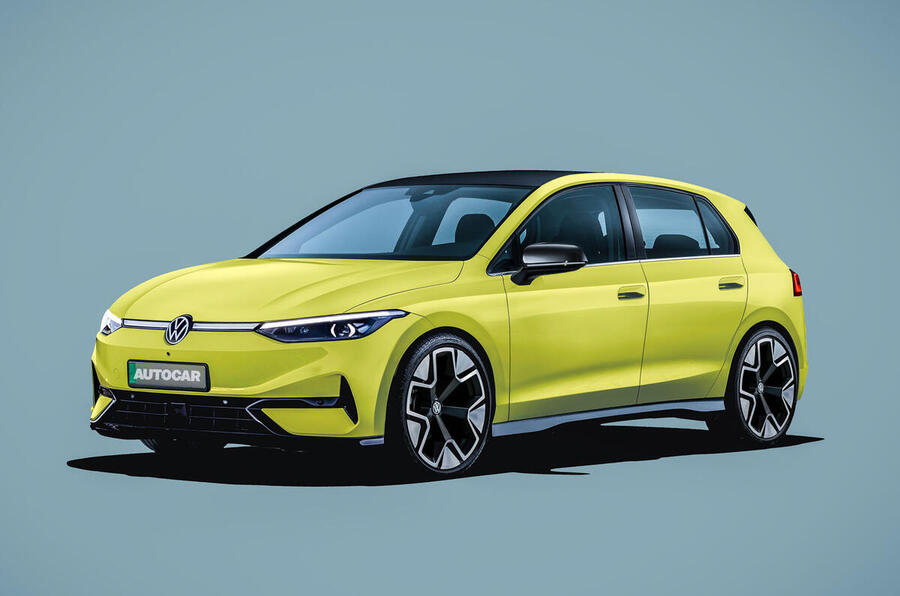
Potentially one of the biggest years for VW’s growth in sales of EVs will be 2028, when its most famous badge finally gets fully electrified.
The electric Golf, currently under development at the company’s Braunschweig R&D centre in Germany, will be the first VW model sold in the UK based on the company’s new Scalable Systems Platform (SSP).Â
It will use an 800V electrical architecture and feature more advanced battery technology, faster charging and more advanced software functions, marking a signifi cant technological step forward from today’s MEB-based models.
Grünitz previously told Autocar that the real benefit of the new architecture was that it was “highly flexible and highly updateableâ€.
He added: “With over-the-air updates, I can introduce new functionality to our customers even after they bought the car, without them needing to bring it in for a service. That means it’s really the next step.â€
The electric Golf’s design will be inspired by the incoming entry-level EVs, suggested design chief Mindt, while still building on the traditional and familiar Golf design traits.
VW could also merge the Golf model name with the ID sub-brand, resulting in the car being called the ID Golf, although this has yet to be confirmed.Â
Following the standard car, both GTI and R hot hatch variants will follow.
The electric Golf is being developed in a joint programme with an electric version of the T-Roc, with both models set to be produced at VW’s Wolfsburg plant.
“Our goal is to build the electric Golf on the new SSP platform there, along with the electric T-Roc,†confirmed VW CEO Schäfer. “This will establish Wolfsburg as the capital of our new all-electric compact class.â€
The new SSP-based electric T-Roc will feature new styling, improved interior space and added digital functionality.Â
Positioned above the upcoming ID 2X but below the ID 4 successor, it’s expected to become one of VW’s best-selling electric models in future years.
Daniela Cavallo, chair of Volkswagen’s General Works Council, said the electric Golf and T-Roc together “represent a volume in excess of 500,000 units per yearâ€. She added: “The SSP models will be just as important to VW’s future as the MQB has been.â€
ICE upgrades also inbound
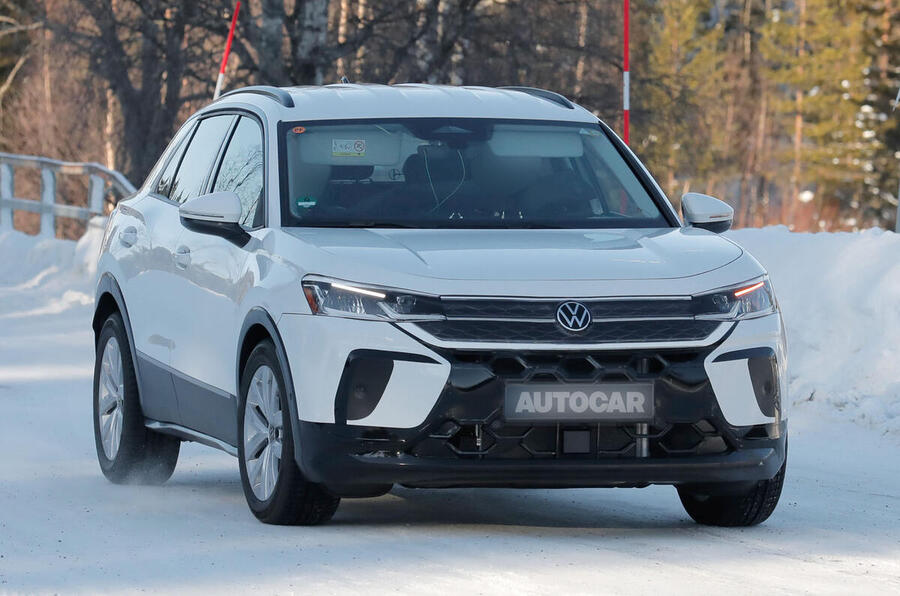
Alongside the electric Golf and electric T-Roc, VW will continue to sell ICE versions of some models as part of a new strategy that represents a shift in customer sentiment and a growing industry consensus that a mixed drivetrain portfolio will be needed well into the 2030s.Â
This has been driven by sales of EVs not accelerating as fast as anticipated and infrastructure concerns remaining in many markets.
As such, Volkswagen is realigning its model cadence and development priorities to offer buyers more flexibility.
In the case of the Golf, this will be an upgraded version of the current hatchback, and a second-generation ICE T-Roc will be launched at the end of this year.Â
Set to be revealed at September’s Munich show, it is tipped to be the final new ICE model that Volkswagen will bring to market.
Despite them sharing a name, the ICE T-Roc will be an entirely separate model from its new electric sibling.
With the new ICE T-Roc, VW will introduce a fullhybrid powertrain to its line-up for the fi rst time. The new set-up, similar to that used by the Toyota Prius, combines a petrol engine with an electric motor and battery, enabling limited electric-only driving without the need for external charging.
The petrol engine is expected to be a turbocharged 1.5-litre four-cylinder petrol engine. As well as providing direct drive, it will also function as a generator to recharge the battery.Â
Various outputs are planned, ranging from 201bhp to 268bhp and 258lb ft to 295lb ft. The technology differs from VW’s current mild-hybrid and plug-in hybrid systems, offering a cheaper alternative in some of its most popular models.Â
Autocar has been told that the powertrain will be available not only on the new ICE T-Roc but also across other MQB Evo-based models, including the Golf and Tiguan, as well as others across the VW Group stable. This pushes the lifespan of those cars until at least 2033, Autocar understands.Â
A significant facelift for the Golf next year will bring improved infotainment, mild styling tweaks and a streamlined engine range that will include the new full-hybrid powertrain.Â
VW has committed €60 billion (£50.8bn) in further investment into ICE development through to the end of 2028, including this new hybrid push.
